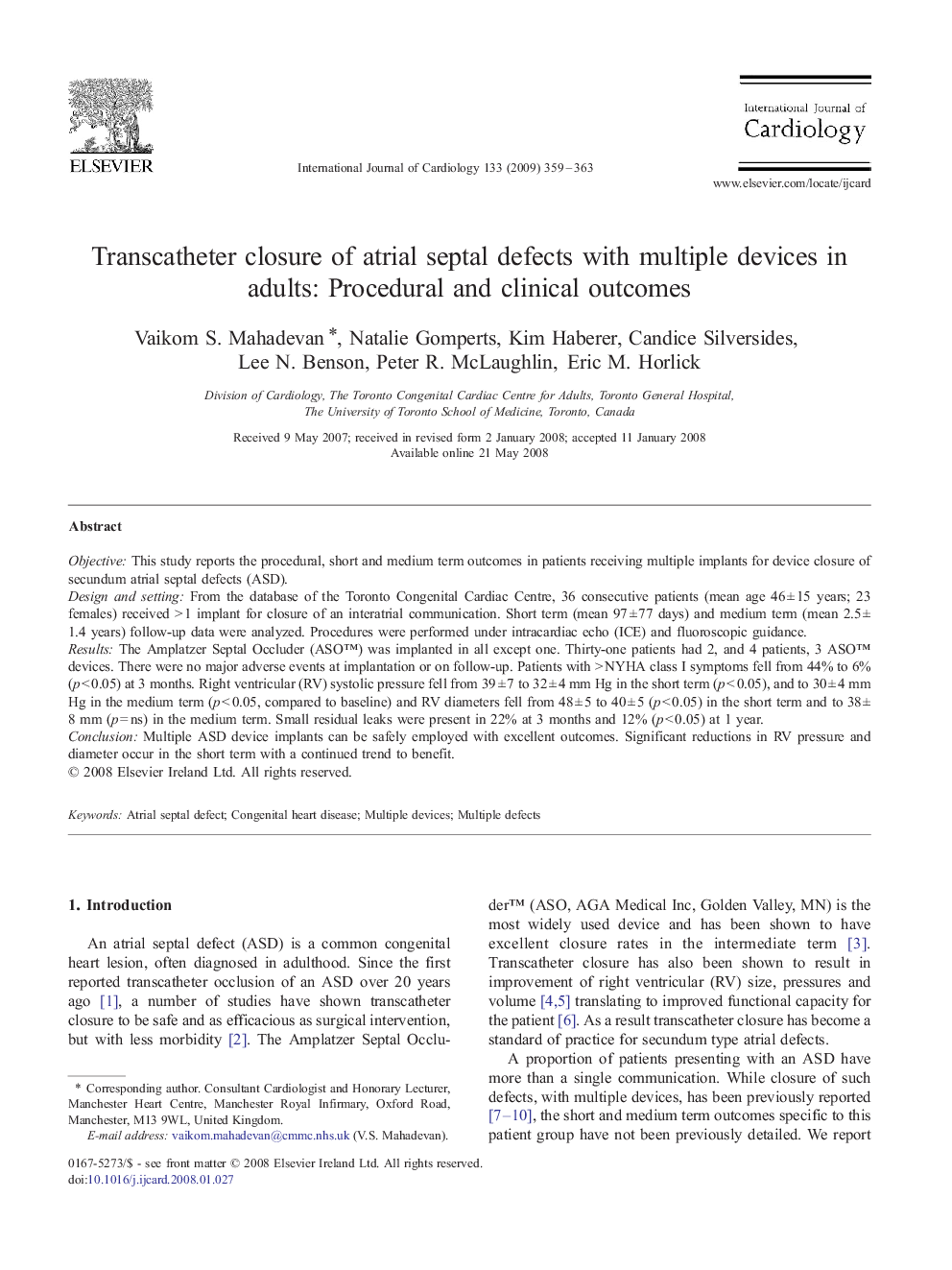| Article ID | Journal | Published Year | Pages | File Type |
|---|---|---|---|---|
| 2933689 | International Journal of Cardiology | 2009 | 5 Pages |
ObjectiveThis study reports the procedural, short and medium term outcomes in patients receiving multiple implants for device closure of secundum atrial septal defects (ASD).Design and settingFrom the database of the Toronto Congenital Cardiac Centre, 36 consecutive patients (mean age 46 ± 15 years; 23 females) received > 1 implant for closure of an interatrial communication. Short term (mean 97 ± 77 days) and medium term (mean 2.5 ± 1.4 years) follow-up data were analyzed. Procedures were performed under intracardiac echo (ICE) and fluoroscopic guidance.ResultsThe Amplatzer Septal Occluder (ASO™) was implanted in all except one. Thirty-one patients had 2, and 4 patients, 3 ASO™ devices. There were no major adverse events at implantation or on follow-up. Patients with > NYHA class I symptoms fell from 44% to 6% (p < 0.05) at 3 months. Right ventricular (RV) systolic pressure fell from 39 ± 7 to 32 ± 4 mm Hg in the short term (p < 0.05), and to 30 ± 4 mm Hg in the medium term (p < 0.05, compared to baseline) and RV diameters fell from 48 ± 5 to 40 ± 5 (p < 0.05) in the short term and to 38 ± 8 mm (p = ns) in the medium term. Small residual leaks were present in 22% at 3 months and 12% (p < 0.05) at 1 year.ConclusionMultiple ASD device implants can be safely employed with excellent outcomes. Significant reductions in RV pressure and diameter occur in the short term with a continued trend to benefit.
